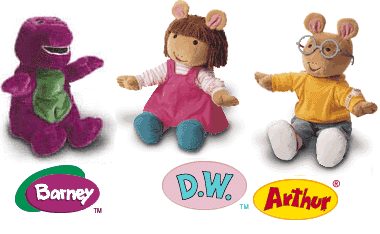

 |
 |

 Previously in Digital Culture: "The Digital Philosopher," by Harvey Blume (December 9, 1998) Can robotics shed light on the human mind? On evolution? Daniel Dennett -- whose work unites neuroscience, computer science, and evolutionary biology -- has some provocative answers. Is he on to something, or just chasing the zeitgeist? "Coming of Age in Cyberspace," by David S. Bennahum (October 28, 1998) In the bedrooms, the arcades, and the high school computer rooms of the 1980s, kids of the Atari generation invented today's digital culture. An excerpt from David Bennahum's memoir, Extra Life. "Portable Musings," by Sven Birkerts (September 10, 1998) The book is the network, the network is knowledge, and soon you'll be able to curl up in bed with all of it. This calls for some serious rumination. "The Invisible World Order," by Andrew Piper (July 29, 1998) If digital technology is to serve humanity (and not the other way around), we'll have to come to terms with the database and all that it implies. More on Technology and Digital Culture in Atlantic Unbound and The Atlantic Monthly. Join the conversation in the Technology & Digital Culture conference of Post & Riposte. |
 by David Shenk "The killer app is the eyes," Erik Strommen tells me as he rotates his right hand to cover up two painted plastic eyes on the head of a plush, bright-purple dinosaur doll sitting placidly in front of us. The doll, about a foot long with a lime-green belly and six yellow toes, is a miniature replica of Barney, the popular children's television character; in place of the human being stationed within the polyester and foam of the life-size Barney, this rendition is packed with electronics and microprocessors courtesy of Microsoft. It's not alive, but it pretends to be. As soon as Barney's eyes are shielded from the light in the room by Strommen's hand, the doll reacts. "Whoa-oh-oh-oh!" Barney sings out in his familiar, punchy voice. "Where did you go?" When Strommen pulls his hand away, Barney blurts out, "Oh, there you are!" "That's the killer app," Strommen repeats with a youthful grin. "The kids just can't get enough of that." Here is one phrase I did not hear buzzing around the crowded showrooms and elevator wells at the 1998 Toy Fair, the frenzied annual New York City convergence of more than 20,000 toy makers and toy sellers. At high-tech conventions such as COMDEX, "killer app" is one of those expressions that gets tossed out so often it tends to hang in the air like cigarette smoke. But not here, not yet. After all, this was only Microsoft's second year at Toy Fair.
 From a hardware perspective, ActiMates Barney is clearly in uncharted toy territory: it has a PIC microprocessor/microcontroller with 192 kilobytes of RAM (more than my first PC), a two-megabit ROM chip, a transistor board, three motors, five sensors, and -- most significantly -- a two-way radio transceiver for wireless communication with television, videocassettes, and computers. Designed for kids aged two to five (the same demographic as the television show), Barney serves as a new sort of mediator for a toddler's interaction with the electronic world. A special radio signal, encoded into Barney TV broadcasts and built into a series of ActiMates CD-ROM software packages (software and transmitters sold separately) is detected and decoded by ActiMates Barney. As the show begins, the Barney doll sitting next to you or on your lap says, "I like watching TV with you," and then, "Here we go!" Soon it begins to respond coherently (if gratuitously) to the dialogue and images on the screen. During the course of any given program, the furry companion comments on the program content with steady bursts of affirmation ("This will be great fun!" "I like getting hugs!"); faux surprise ("Oh my!" "Look at that!"); and forced curiosity ("What is that?" "Let's look"). There are also partial sing-alongs, with the doll chiming in on choruses. Frequently, ActiMates Barney is simply giggling at or endorsing what the TV Barney is saying on screen: TV Barney: "Will you help protect our earth and keep it clean?" ActiMates Barney: "Yes!" This provokes an instinctive creepy feeling in any adult who has never witnessed it before. After a while the agitation fades into annoyance, as the doll interrupts the television narrative with comments so consistently unnecessary that you'd probably worry if your own child were making them. Apart from the TV and computer, ActiMates Barney functions as an "intelligent" stand-alone toy. Barney has a two-thousand-word vocabulary, sings seventeen songs, and plays twelve separate games. Squeeze his hand to play patty cake. Squeeze again to hear him meow like a cat, or play count-along. "I was bringing home early prototypes for my son to play with," Strommen says. "He loved it. We worked it into a bunch of our bedtime routines. For instance, if you don't do anything with Barney, he yawns, and then two minutes later he says, 'I'm sleepy --' and then 'Good night' as he powers down. So before bed, we used to take Barney in, sing a couple songs with him, and then just sit there and talk. Barney would yawn and say, 'I'm sleepy.' I'd say, 'Oh, it must be time to go to bed -- Barney's sleepy.' Then Barney would go, 'Good night,' and my son would say, 'Good night, Barney.'" Strommen's son is now four, and is beginning to outgrow Barney. Happily for him, his father has developed two new ActiMates dolls for the next level up. "We were Barney people, and now we're growing into Arthur and D.W. people," Strommen says of the new plush toys, who are also modeled on top-rated PBS characters from a show geared to ages four to eight. Arthur and D.W. are a brainy brother-and-sister pair -- Arthur the one with the nerdy glasses and awkward self-consciousness, D.W. the laughably precocious mop-head. The personalities differ, but the content of the two dolls is equivalent. With 4000-word vocabularies (twice that of Barney), they have more than a hundred phrases grouped into different categories -- careers, tongue-twisters, holidays, and knock-knock jokes. "When we do testing," Strommen says, "usually at about the third or fourth knock-knock joke, the kid who's sitting next to me turns to me and says, 'I have one. Knock knock' -- and we end up telling knock-knock jokes to each other. It's a real social activity. It gets kids thinking about what they know." Strommen is a developmental psychologist by training (one of three psych Ph.D.'s on the ActiMates team), and an educational technologist in practice. Before coming to Microsoft in 1996 he spent seven years developing software for Children's Television Workshop. His seriousness of purpose comes shining through in his demonstration, in the dolls themselves, and in the accompanying software. Strommen set out to develop a product that kids could interact with over a long period, and the hardware and software are indeed geared for a long-term relationship. Thanks to a calendar chip, Arthur and D.W. are able to track the time and date for the next ten years. They can be put to bed with your child, Strommen explains, and programmed to wake her in the morning with "Ding ding! Time to get up!" They can also "learn" and "remember" your child's birthday, for which they initiate a countdown sequence: "Five days to your birthday!" ... "Four days to your birthday!" ... and so on. "He's like a little friend," I suggest to Strommen. He looks up at me and smiles. "Exactly," he says. "He knows you." Join the conversation in the Technology & Digital Culture conference of Post & Riposte. More on Technology and Digital Culture in Atlantic Unbound and The Atlantic Monthly. David Shenk, the author of Data Smog (1997), lives in Brooklyn. A collection of his essays on science and technology will be published next fall. Copyright © 1999 by The Atlantic Monthly Company. All rights reserved. | ||||||||||||
|
| |||||||||||||
 | |
.gif) |
 |